Inside the entrance of the Main Reading Room at the National Library sit two handsome globes. Like the globes they are modelled on from the 17th century, being celestial and terrestrial, they show the night sky and the lands and oceans. They have graced our reading rooms since 1978 and are a constant source of interest and fascination to our visitors, as well as being a visible demonstration of the wonders of our incredible map collection.
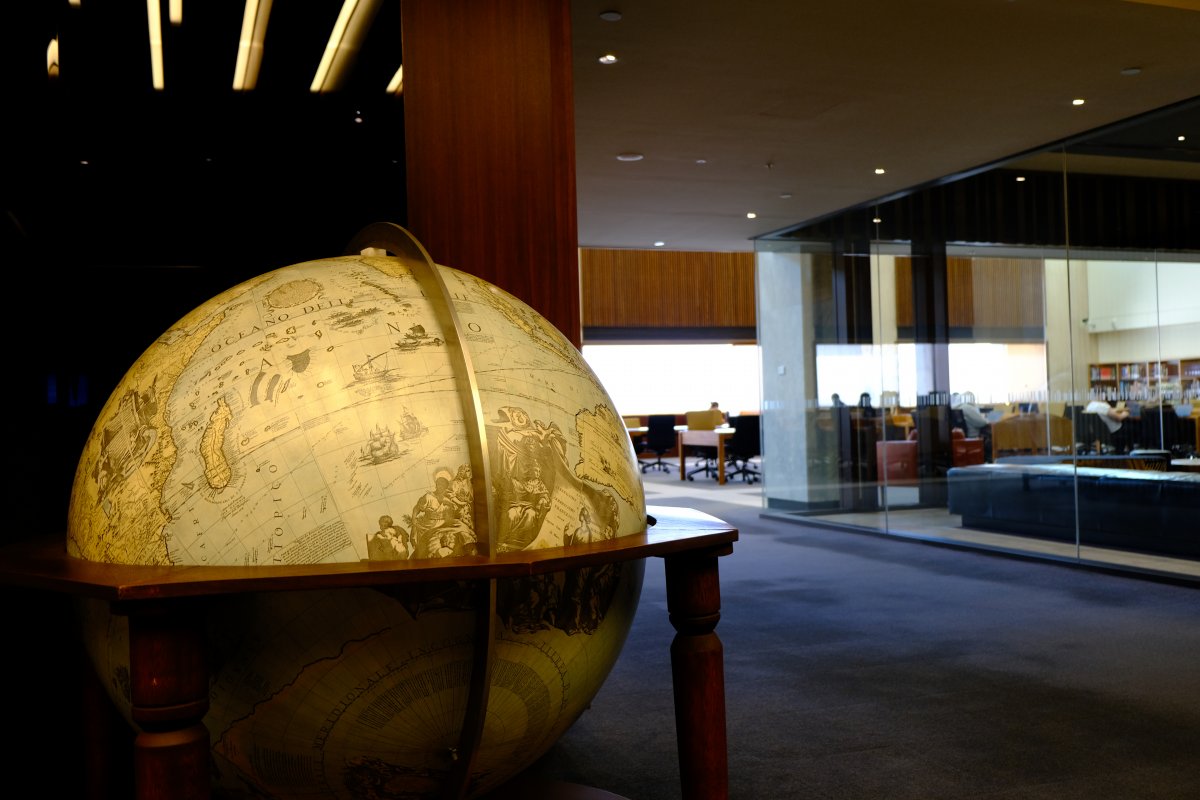
The Coronelli Terrestrial Globe on display in the Library's Main Reading Room
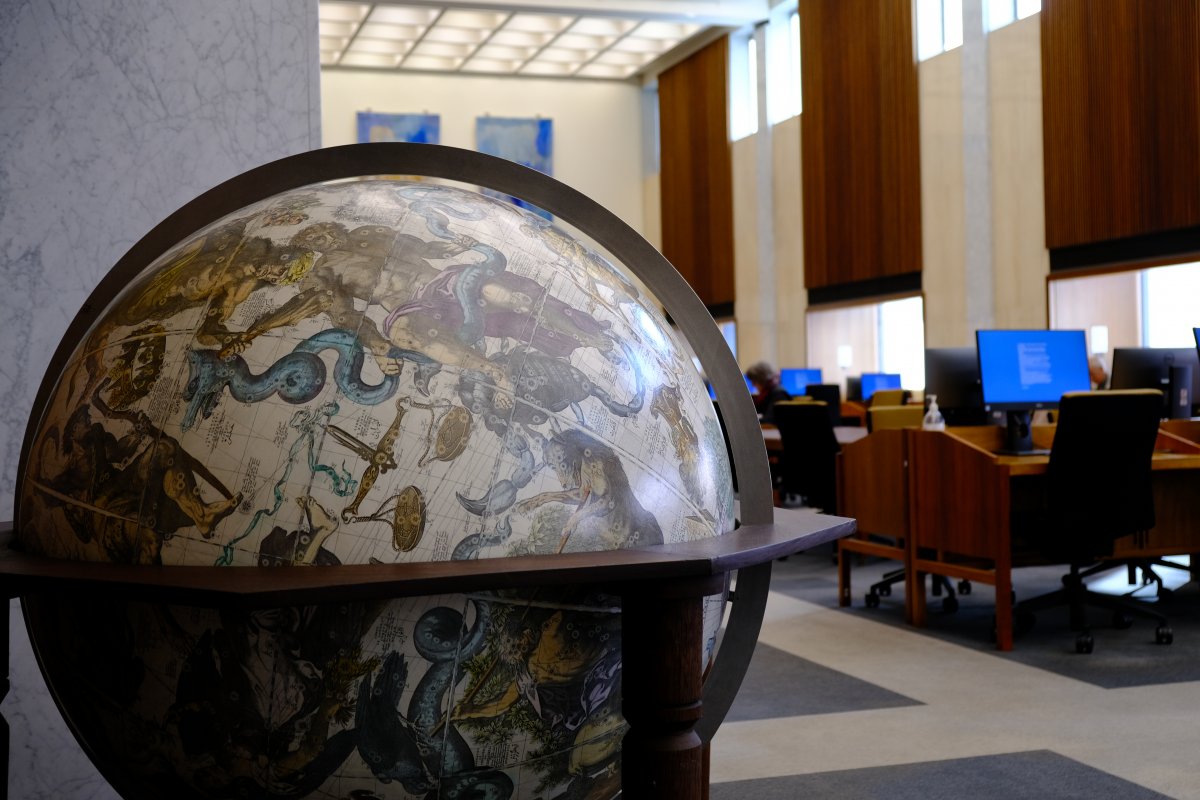
The Coronelli Celestial Globe on display in the Library's Main Reading Room
Origin of the Globes
In the 17th century a talented Venetian named Vincenzo Maria Coronelli (1650-1718) made the original globes upon which the modern versions held by the National Library are modelled. Born near Venice, Coronelli was a Franciscan monk who, in 1684, founded the Accademia Cosmografica degli Argonauti, the first geographical society in the world. He went on to become the Cosmographer to the Republic of Venice.
Coronelli learned the art of globe making as a young man, possibly when he was studying holy orders as a young novice in Santa Maria Gloriosa dei Frari in Venice. He also excelled in the study of cosmography, mathematics and geography. Globe-making was popular in religious orders of his time, giving the friars and monks an opportunity to hone their knowledge of cosmography, geography, woodwork and papier mâchè. Over the course of his life, Coronelli produced hundreds of maps and globes as well as an atlas, the Atlante Veneto (1690).
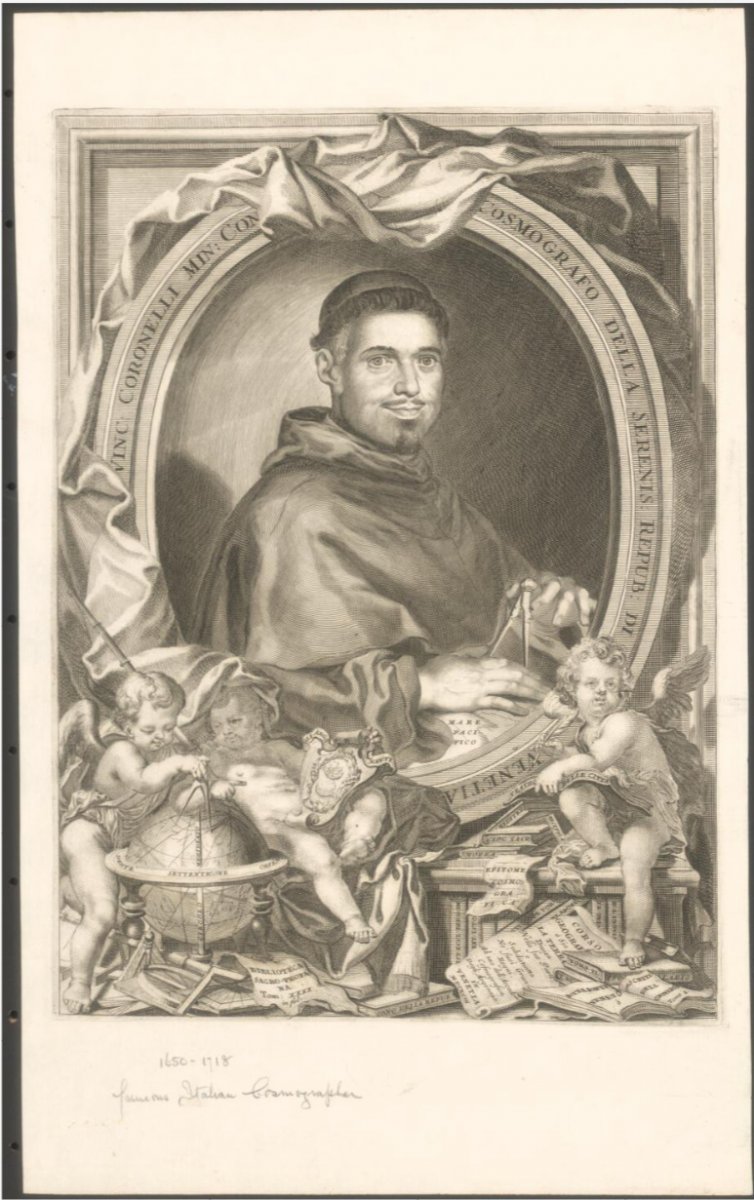
Portrait of Vincenzo Coronelli, nla.cat-vn2205390
The Coronelli Globes of Louis XIV
Coronelli’s first customer was the Duke of Parma, for whom he made a set of terrestrial and celestial globes. Delighted with them, the Duke showed them to his friends, including the French Ambassador at the time. The French Ambassador happened to be on the lookout for an impressive gift for King Louis XIV of France. Coronelli duly moved to Paris in 1681 to undertake the commission.
The King of France needed his globes to be truly impressive, so Coronelli constructed two of monumental size. Weighing over 2 tonnes each with a diameter of 395cm, they were made of timber, plaster and fabric, with highly detailed painted exteriors. They were completed in 1688 and featured the most advanced cartographic knowledge of the time.
King Louis XIV had them installed in specially constructed pavilions at the palace of Marly-le-Roi—one for the celestial globe and one for the terrestrial globe. Each pavilion came equipped with books, maps, desks and chairs to support contemplation of the magnificent objects. The King and his court spent lazy evenings gazing into the heavens and comparing what they saw to what was on the globes. Each globe was assigned a dedicated garde du globe (keeper of the globe) to provide explanation and guard the globes. These globes are now on display at the on display in the Bibliothèque Nationale François Mitterrand in Paris.
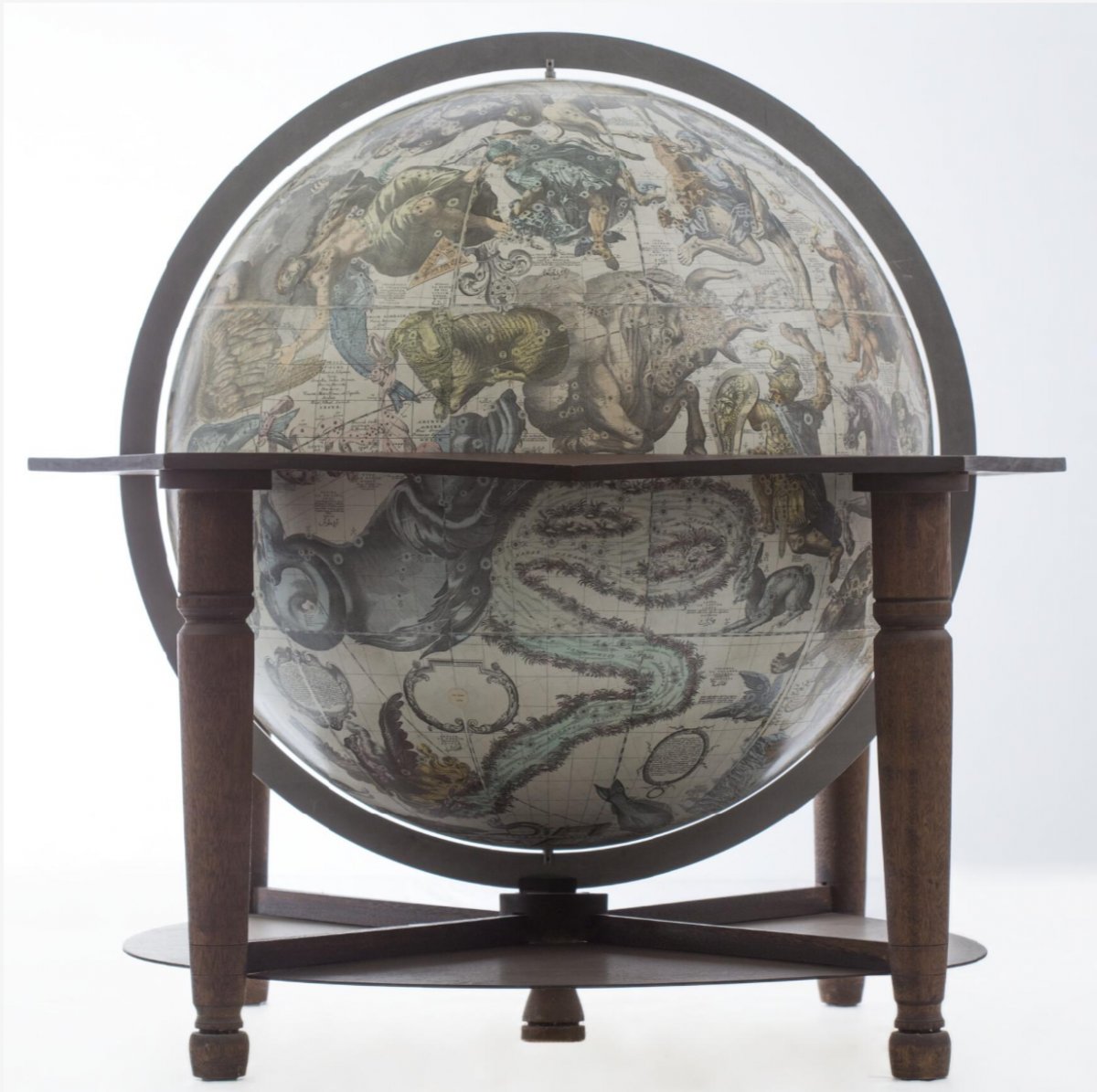
Vincenzo Coronelli (1650-1718) and J.C. Eade , Coronelli Celestial Globe, 1978, nla.cat-vn6154832
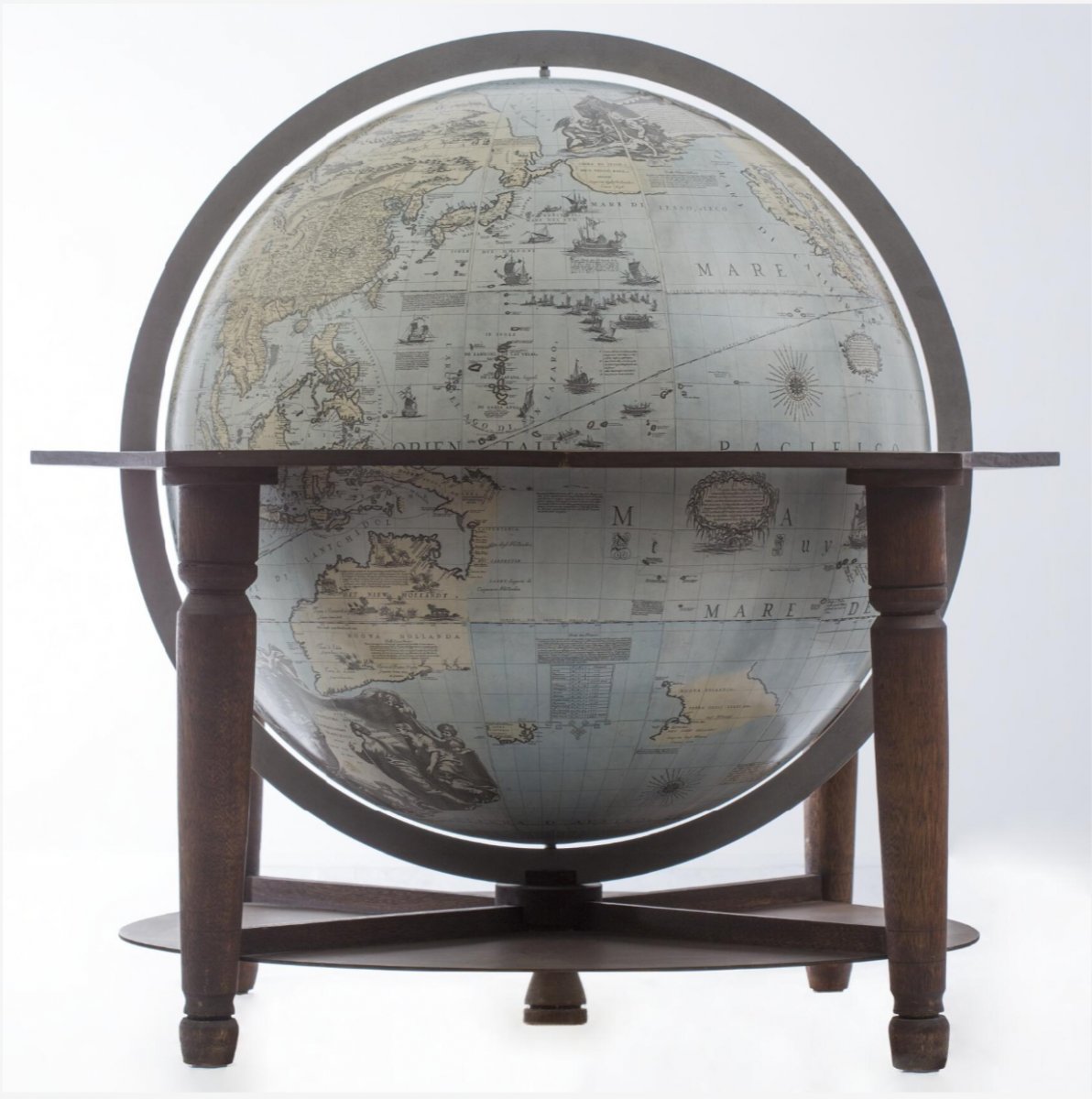
Vincenzo Coronelli (1650-1718) and J.C. Eade, Coronelli Terrestrial Globe, 1978, nla.cat-vn6154743
Why a Pair of Globes?
Globes were made as a pair.
Terrestrial globes included the latest geographical knowledge, as a scholarly display or demonstration of power.
Celestial globes were usually a reverse image of the stars in the sky or depicted allegorical images of the constellations. You can imagine yourself inside the Coronelli celestial globe looking out to see the night sky above.
The Coronelli Globes at the National Library of Australia
The globes on display at the National Library were made for us in 1978 by John C. Eade of the Australian National University, and are exact copies of Coronelli’s globes. Ours are made of fiberglass and measure just 108cm (a bit over one quarter the size of those made for King Louis XIV).
The globes featured in early advertising for the Library as an enticement for visitors:
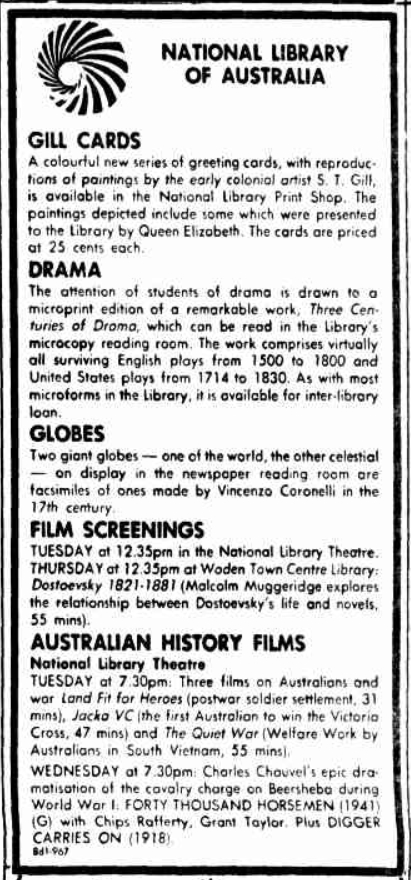
‘Advertising’, The Canberra Times, 11 August 1979, nla.news-article110574144
Given we can’t get to France right now to see the King’s globes, join the many people who continue to admire the pair at the National Library. We may be sans garde du globe, but we are still eager to share our globes with you, along with the rest of our maps collection. If you can’t get to the National Library to see our globes for yourself, you can see what they look like by searching our catalogue and viewing the digitized images of the Terrestrial Globe and the Celestial Globe. We also have several digitized maps by Coronelli including Le Molluche, which depicts the Moluccas, now known as the Maluku Islands, in Indonesia.

Vincenzo Coronelli (1650-1718), Le Molucche, c.1697 nla.cat-vn3428176
The National Library holds a wide and fascinating variety of globes, which range in size from the large Coronelli globes to the smallest pocket globes. If you are interested in seeing the variety of globes we hold, you can find a selection digitized and available online.
Further Reading
A wide variety of reading is available both in print and online and may be requested via our catalogue and our eResources, including the following selected articles and books:
J.C. Eade, ‘The Accuracy of Vincenzo Coronelli's Celestial Globe’, Isis, 68(3), 1977, pp.437-440.
Milanesi, Marcia, Vincenzo Coronelli Cosmographer (1650-1718). Turnhout: Brepols Publishers, 2016 https://nla.gov.au/nla.cat-vn7337438
Sumira, Sylvia, The Art and History of Globes. London: British Library, 2014 https://nla.gov.au/nla.cat-vn6490006
B. Whyte, ‘New South Wales: The well-known Canadian placename’, The Globe, Issue 75, 2014, pp.33-49.